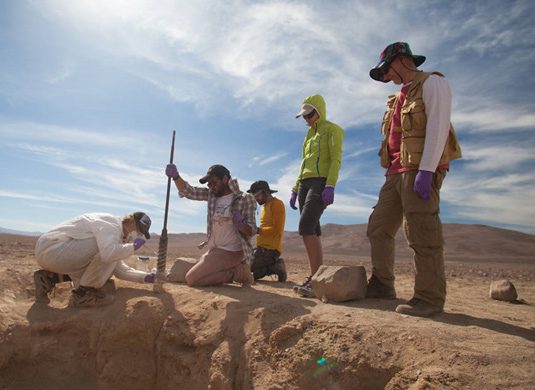Climate change is not a problem of the future; it has been going on for more than a century. A study that combines 3 ring counts with climate models shows that droughts caused by human emissions go back to the beginning of the last century.
In large regions of the planet, including the Mediterranean basin, the aridity has been imposed to the humidity. With the level of greenhouse gases (GHG) that continue to agglomerate humidity, the authors of the study say that “very soon, we should see unprecedented droughts in many places”.

The rings of the trunks of the trees allow knowing the climate condition in the past. Their regularity or thickness differences tell the heat waves or drought times they endured. Thanks to the dendro-climatology, regional atlases of droughts have been built that, in the case of Europe, go back to the 12th century.
On that basis, a group of scientists has looked for the human footprint in the patterns of drought and humidity in several areas of the planet. They also modeled the future evolution of that greater or lesser dryness spurred by climate change.
The results of their work, published in the journal Nature, indicate that, around 1900 and coinciding with the increase in GHG emissions, droughts become more frequent, intense and widespread. The trend continues until the middle of the
Other studies have linked the presence of these microparticles in the atmosphere with an increase in humidity. The possible mechanisms here would be a lower solar incidence and a greater capacity to agglomerate humidity. But since the 1970s, coinciding with the first restrictions on polluting emissions, the drought index accelerates.
“The study is the first to emphasize that, in addition to direct changes in regional and global precipitation and temperature, human activities also have an impact on large-scale droughts”, says Lawrence Livermore National Laboratory researcher (US) and co-author of the study, Paul Durack.
But the different geographical regions show different trajectories. Moisture is shrinking in much of North and Central America, Eastern Europe, the countries of the Mediterranean riparian and Australia. On the contrary, the dryness of the soils wanes in Alaska, the northernmost regions of America and the whole fringe of east to south of Asia. The study does not have enough data from South America and Africa.
Soil moisture is a complex issue since 2 processes are involved that do not always get along well: rainfall and evapotranspiration, the amount of water returned to the atmosphere by the evaporation of the soil and the transpiration of the plants. Although in principle a warmer air carries more moisture, causing more rain, it can also reinforce evaporation, drying out the soil.
It is what the models say can happen in Central America, the west and center of the US and central Europe in the immediate future. On the basis of those observed so far, the authors of the study project the trends of drought and humidity for the remainder of the century. Here the precipitations will remain, increasing even. But the increase in temperatures will force more evaporation. The Mediterranean basin could suffer in parallel less rainfall and greater evaporation.
For the dendro-climatologist at the Pablo de Olavide University, Raúl Sánchez-Salguero, this work indicates that “the anthropic effects of greenhouse gases influence the trends of droughts since the beginning of the 20th century, much earlier than demonstrated until the date”.
The other data that stands out Sanchez-Salguero, who has not intervened in the study, is that the models with which they have worked anticipate the advance of the drought: “According to its new global atlas of droughts, there will be an overtaking of the years extremely dry (projected for the end of the 21st century) of up to 40 years for North America and Oceania and 15 to 20 years earlier in Europe and the Mediterranean “.
As the principal author of the study says, NASA researcher Kate Marvel, “all the models are projecting that we should witness an unprecedented drought advance and in many places”.

